It is relatively easier to come across some vintage-looking prints on T-shirts often while scavenging through thrift, but are they vintage at all? Usually, a lot of money can lie in the answer to that question. Below are some indications one can use to evaluate.
Does it have a tag?
Primarily, a physical tag must be present on the T-shirt (or there must be signs of it having been torn away). If there is no tag and instead the details about the article have been printed in the form of a tagless label on the neck, then it is highly likely the T-shirt was produced after the early 2000s. This was when the concept of tagless labels was widely introduced and popularized by Hanes. Here it is important to consider that the early 2000s were also around 20 years ago, so while some T-shirts with tagless labels can also be considered decent vintage finds, knowing this fact can prove to be helpful in telling apart modern reprints from genuine pieces of classic older band/music T-shirts
Is the tag made of cotton or nylon/polyester?
The second thing to observe on the tag is its make. A genuine vintage tag in and around the 1970s is often going to be made of thin paper-like cotton fabric with minimal to no branding. As the years passed, the tags became thicker and more colorful with branding being added progressively. As a rule of thumb, a 100% cotton or textured fabric material is going to be an archetype of tags on authentic vintage tees. These are going to always be broad and rectangular, while the nylon-like thin and slippery polyester tags are a new implementation. Below are a few examples of authentic tags from some late 1980s to mid-1990s tees.

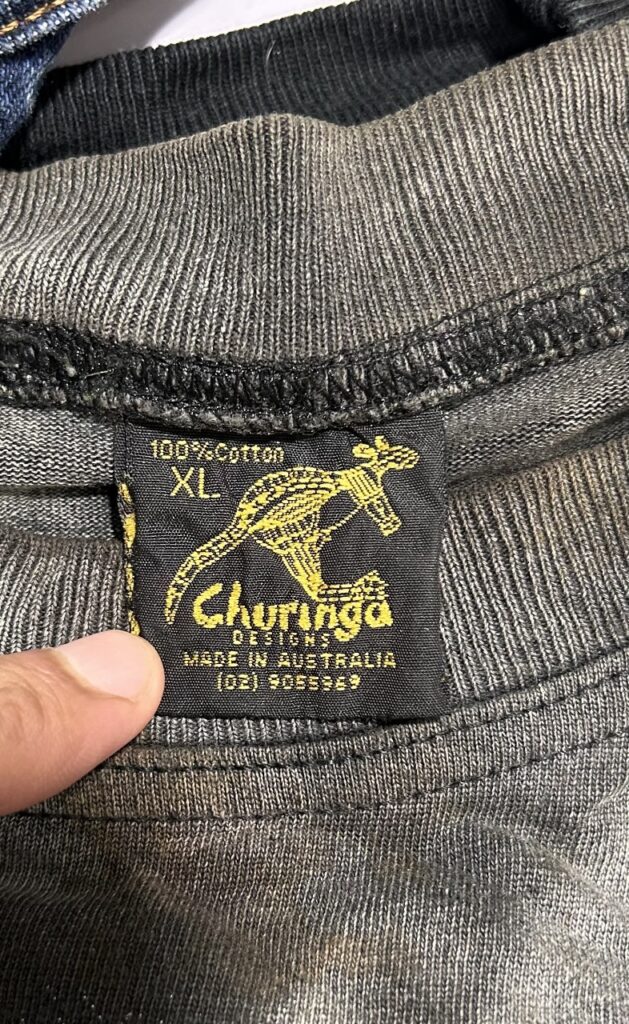
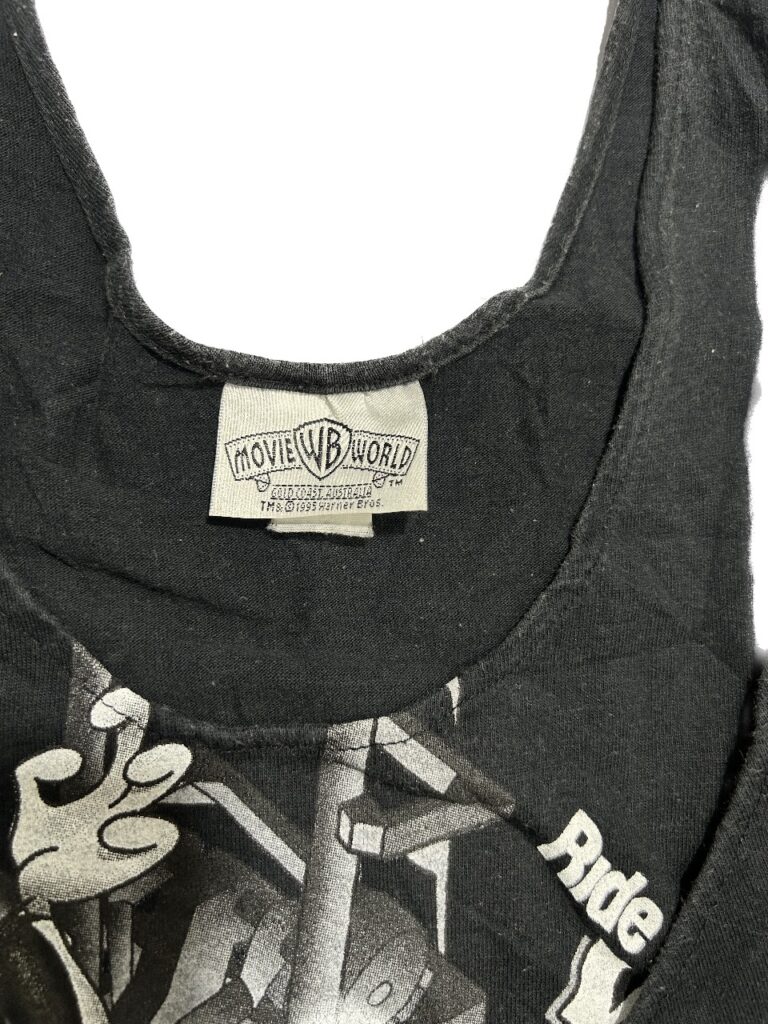
Bonus information: Keep an eye out for Screen Stars and Hanes’ tags on vintage tees, as these were the major manufacturing brands being licensed to merchandise for bands and concerts in the 1980s and 1990s. The white Liquid Blue tag of the 1990s is also a treasure, with its Tie-Dye tees being regarded as the world’s best, and pieces of art at that. The Stanley Desantis tag is also common on vintage movie tees. Bear in mind that these are only a few examples, many other true vintage tees have different tags, both branded and unbranded, with the tag almost always retaining the characteristics as described above. Naturally, you are going to have to do some research on how old each particular tag is when it comes to these brands. There can be variations in the tag of each brand across different eras, and as all brands are unique, there can’t be a single hard-and-fast rule to assess them collectively.
Is the T-shirt made in USA?
Be sure to check the origin of the tee if present on the tag. If it is Made in USA, it has a higher chance of being true vintage, as America was the central hub of T-shirt manufacturing up until the early 1990s. Later on, as a result of several trade agreements, countries like Honduras and El Salvador among others emerged as prominent players in the T-shirt manufacturing industry. They hold lesser value as compared to the Made in USA tees due to the difference in quality and time period in which they were manufactured.
Is it single-stitched or double-stitched?
Typically, a genuine vintage tee dating backward of 1990 is going to have only a single line of stitching on the cuff of the sleeves and the hem, while newer ones are going to have the double-stitching which is the norm today. However, this is not absolute as some brands like the French Riviera, Thrills, and Polo Ralph Lauren still tend to have single stitching on many of their T-shirts. In addition to this, manufacturers in Thailand also intentionally incorporate single stitching into their knockoffs of classic vintage tees to throw off the average thrifter (luckily after having read this article you are no longer going to be the average thrifter). Meanwhile, the opposite is also true. If a T-shirt has double stitching it doesn’t automatically qualify it as non-vintage. Manufacturers in Europe adopted the double-stitch method in the early 1990s while other international brands also began the process of reverting to it in the late 1990s. Therefore, you are likely to come across a lot of genuine vintage tees from the 1990s with dual lines of stitching mostly from Europe. Below is an example of a genuine vintage Warner Bros sleeveless tee from Australia with double stitching:
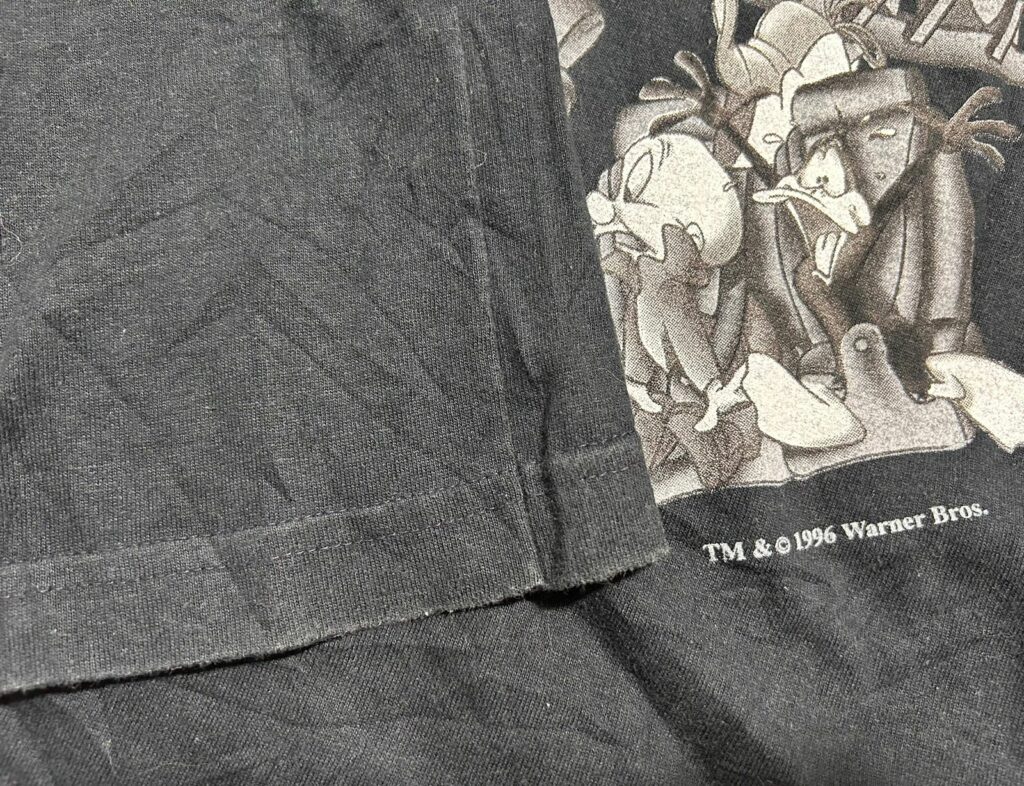
Is the print vintage?
The print on an authentic vintage tee is almost always going to have been screen printed onto it and is highly detailed. It was an art arguably mastered by 3D Emblem in their production of Harley Davidson tees and Liquid Blue in their Grateful Dead tees. The aesthetic appeal of such prints is unmistakable in the eyes of seasoned vintage admirers. The sticker-like shiny prints that you can peel off are strictly not vintage and came into being during the mid-to-late 2000s.
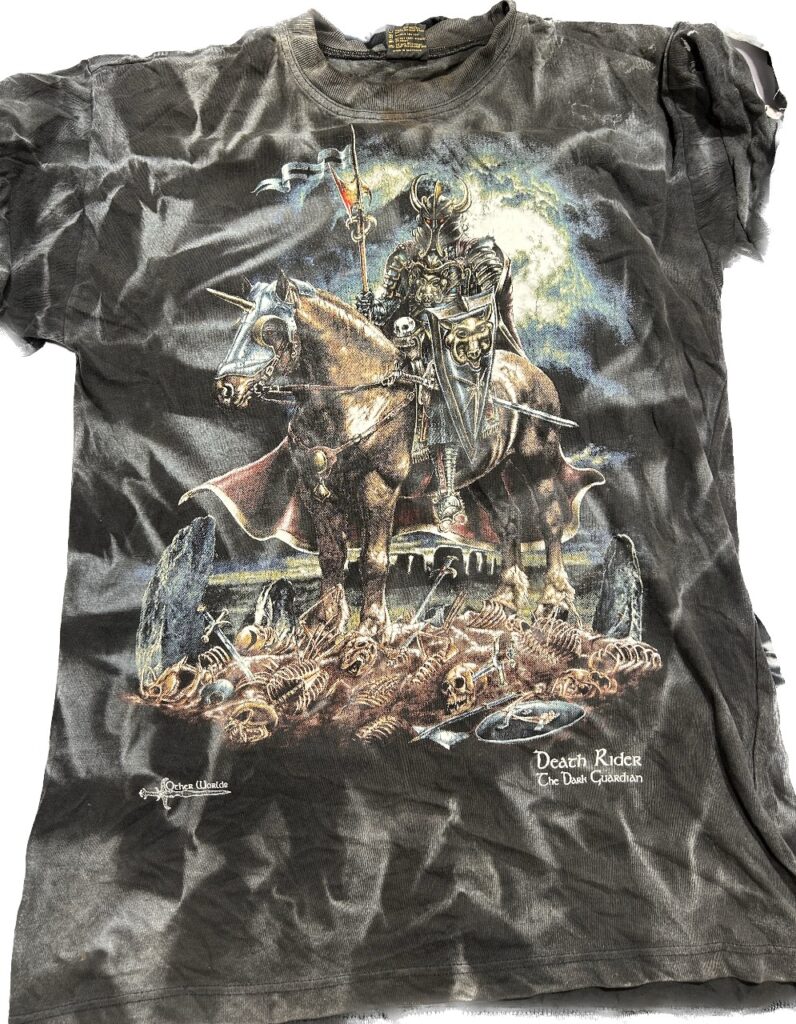
What is the condition of the T-shirt?
Our usual understanding dictates the more worn or deteriorated a piece of clothing becomes, the more it loses its value. This, however, is not really true when it comes to vintage clothing. Some collectors appreciate the pieces that have aged like fine wine in their eyes, looking for fades and other signs signifying the several-decades-long lifespan of the article. Likewise, wear and tear can be a good determinant of a vintage T-shirt’s authenticity. Signs like some fading of the tag, cracking in the print, fading, pinholes/tears, stains, and even the distinct vintage smell are natural and in fact expected for a 30- or 40-year-old piece of clothing to exhibit these. Some modern bootleggers intentionally place a faded-out tag or crackle the print to make it seem vintage, but when you view the entire tee, it will be easy to notice how this forged condition is not really consistent.
Does it have licensing?
At times the copyright licensing date is also going to be present at the edge of the print for branded tees like Harley Davidson, Warner Bros, and Liquid Blue (a few among many others) which is going to help in authenticating the piece. This, however, is not a highly reliable method. Most bootleggers (people who replicate authentic vintage tees without licensing) don’t print the copyright. These tees can also be vintage, though, as some bootleg T-shirts can be manufactured as long as 20 or 30 years ago, but the value would naturally be lesser than that of the original. Similarly, modern manufacturers also tend to replicate copyright licensing with fake dates to sell their knockoffs, so in such cases the other methods can be good determinants to assess the authenticity.
What is the fabric and the size?
Let’s start from the 1970s. Back then, T-shirts were produced with a 100% cotton composition, so they are generally going to feel heavy when you hold them. In the 1980s, however, there was a shift to 50% cotton and 50% polyester, so T-shirts from this decade are going to feel comparatively lighter in weight. Moreover, as a result of the fashion trend of wearing compact and tight-fitted tees in this decade, there is going to be a noticeable difference in their size. For instance, a Large size of the 1980s is going to be comparable to a Medium or Small of the 1990s. Speaking of which, in the 1990s, manufacturers had again moved to a 100% cotton composition. This information can be helpful in dating your tee and also verifying it in case any licensing or production date is mentioned.
Think of all the aforementioned information as individual pieces of a puzzle and look towards getting the big picture in front of you before deciding whether a tee is vintage. Enjoy the process!$$

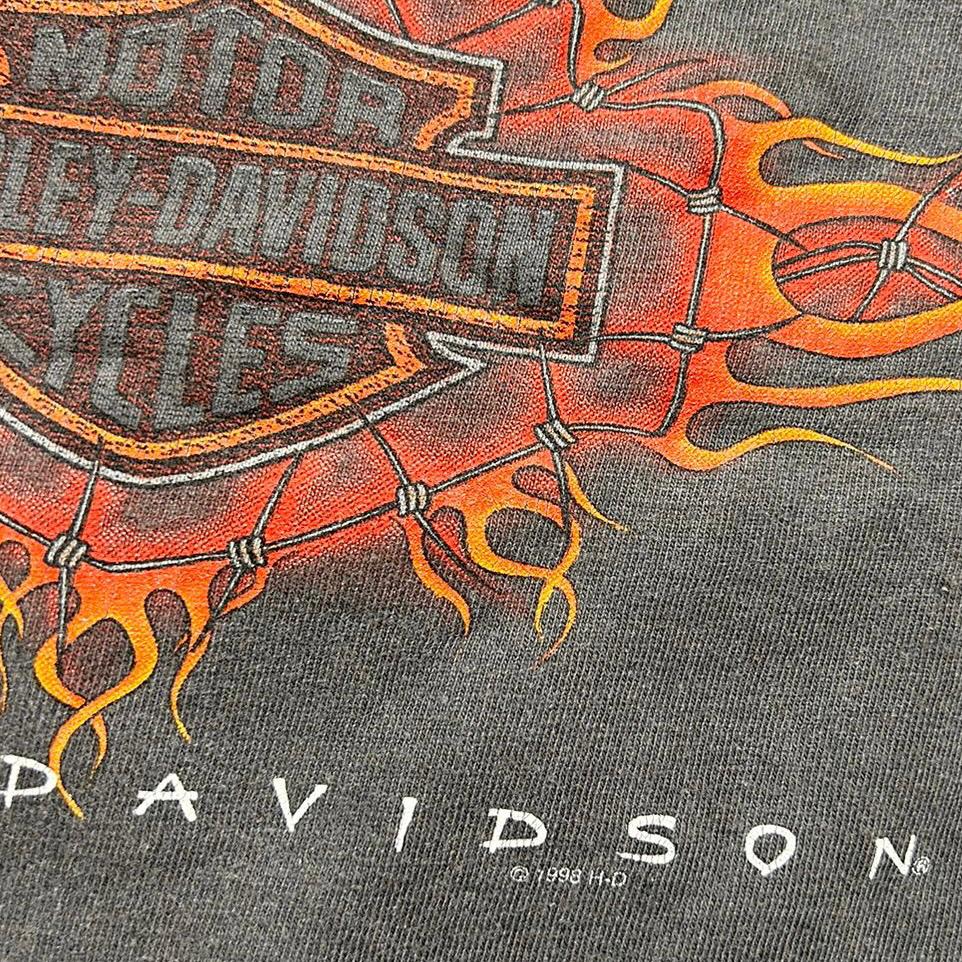
Pingback: What happened to “Streetwear Fashion”? A look back - Vintage Label Hunter